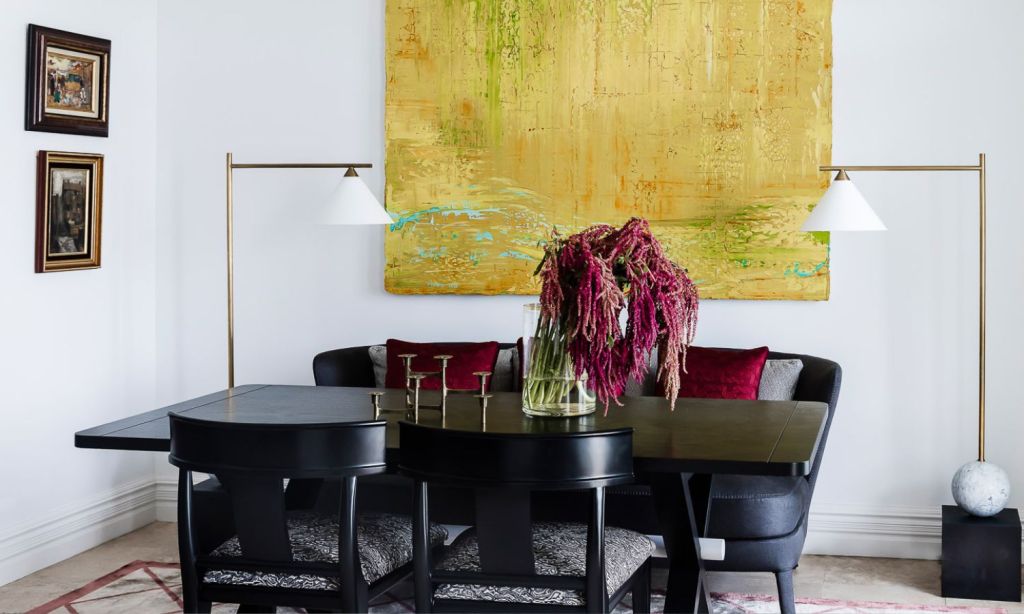I was in the bedroom of my rental apartment when I heard a loud bang from the living room. I ran to see which it was. It was my canvas artwork, hung in place of a TV. I’d used 3M hooks to hang it on the wall, but the humidity in Sydney had separated the hooks’ adhesive from the wall, causing the artwork to fall to the floor. Again.
The artwork had already come unhung twice that month. I know I could’ve leaned it against the wall, using the sideboard underneath it, but I liked the look of it flat against and higher on the wall.
So, I tapped Brendan Wong, a Sydney-based interior designer at Brendan Wong Design, for solutions for displaying art in a rental, like my apartment. He shared that art people collect in their homes is usually an obvious or implicit reflection of their personality. That art then brings a strong personal touch to the property, transforming it into a home.
“Rental properties are often neutral in style and finishes, so art is a great way to introduce colour, pattern and texture,” he says. “It also creates intrigue and generates conversation.”
As for how the art is displayed, Wong recommends calling in a professional who will understand your home’s wall material. They’ll also use a tool to check for a suitably sturdy place on the wall to get a solid fixing and where electrical cabling might be on the other side, which could interfere with a nail.
Many landlords and agents don’t allow nails in rental properties, though, so it’s worth checking their stance on it beforehand. If you mention you’ll be using a professional, they should be more likely to agree.
“If you’re able to use nails to hang works, consider mixing scale and style of works in the same room,” says Wong. “A large abstract or contemporary piece can be contrasted with smaller, more traditional works and brings a sense of curation.”
If you’ve already asked your landlord or agent if you could use nails and they’ve said no, Wong suggests you lean or prop your art. It’s a simple but effective way to display art with no impact to the rental property, he says.
“Sideboards are a perfect place to lean larger paintings as they raise them to a similar level to if they were actually hung,” he says.
Wong also suggests you consider displaying other types of art rather than just framed or canvas works. One option is to display sculptures, which, Wong says, has the extra benefit of being easily moved from one area or room to the next.
“Often, when a sculpture is moved, you’ll see it from a different perspective, which brings renewed enjoyment,” he says. “Smaller sculptures are suited to sit on coffee or side tables.”
Ceramics are another option, bringing what Wong calls a “handcrafted quality” to a room within the rental, often at an accessible cost. Finally, you might want to try displaying tapestries. They’re suited to people who move within rentals frequently.
“Unlike a large painting that needs particular transport or storage, a tapestry can be carefully folded when relocating,” he says. “Tapestries also suit curved wall or can be hung above a bed with ease.”
As for me, I’ll be asking my landlords if I can hire a professional to use nails — carefully, of course. If they say no, I’ll have no choice but to lean the piece on the sideboard.
Related: Tour Kourtney Kardashian’s Sydney Airbnb, Complete With a Pool and Observatory
Related: This One Trick Makes Home Decorating Much Less Overwhelming
Read more stories from The Latch and subscribe to our email newsletter.

